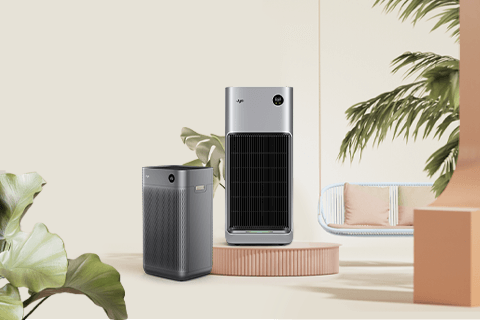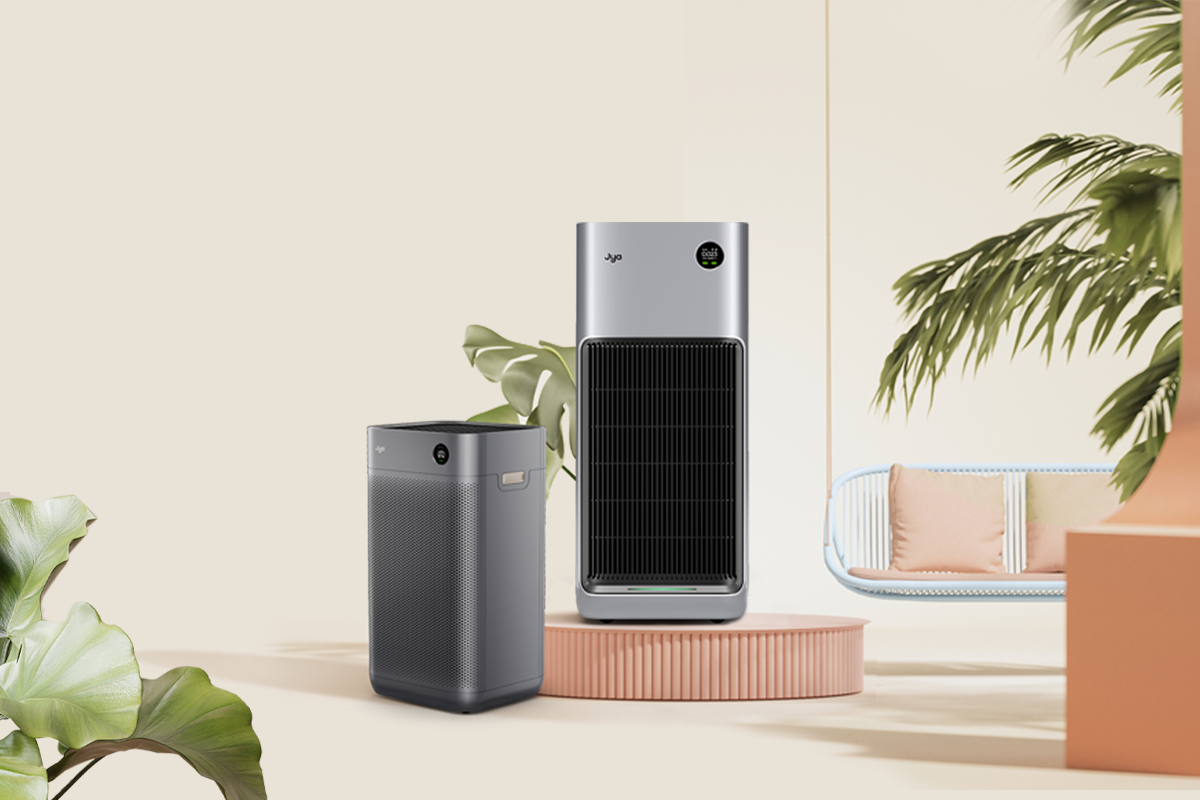How to choose the right air purifier to fight allergies
With Spring just around the corner, allergy sufferers around the world are already dreading the unpleasant symptoms that come along with blooming flowers and airborne pollen. But as millions of people already know, not all allergies are seasonal. Year-round contaminants like dust, mold, pet dander, and other household pollutants can trigger allergies as well. In fact, the air quality inside your home is often more polluted than the air outside, as particulates get trapped indoors and circulate continuously.
If you suffer from asthma or allergies, it’s important to ensure that your indoor air quality is in good shape with a quality air purifier. The right air purifier captures and removes dust, pollen, mold, and more from your home, dramatically alleviating allergy symptoms like dry, itchy eyes and sinus congestion. But, with all the buzzwords and complicated air purifier specifications, how do you choose the right air purifier for your home? Here are the most important factors to consider:
HEPA Filtration Technology
The word “HEPA filter” (High-Efficiency Particulate Air Filter) gets thrown around a lot, but not all HEPA filters are created equal. Filters differ based on the size and number of microscopic particles they remove from the air passing through them. Allergy-causing particles are measured in microns, and superior HEPA filter grades capture smaller particulates. For example, HEPA H10 filters capture 85% of particles over 0.5 microns in size, whereas HEPA H13 filters capture 99.97% of particles over 0.3 microns in size.
Keep this in mind when thinking about allergies. For example, pollen particles are usually about 30 microns in size, dust mite waste particles are about 20 microns in size, and pet dander particles can range from 1 to 20 microns in size. To most effectively neutralize allergy-causing pollutants from the air in your home, we recommend using a purifier with the latest HEPA 13 filtration technology.
CADR
Once you’ve chosen a purifier with the right HEPA filter, the next factor to consider is the size of your home. The CADR (Clean Air Delivery Rate) is a measure of the amount of air that passes through the filter each minute. A higher CADR means that a higher volume of air is being cleaned, so larger spaces require air purifiers with a higher CADR rating.
The clean air delivery rate is a standardized measurement, graded according to procedures set by the Association of Home Appliance Manufacturers (AHAM). Keep in mind that most air cleaners have more than one fan speed, and the CADR advertised is generally based on the highest fan speed.
Real-time air quality monitoring
The right air purifier does more than just clean the air in your home–it also provides air quality information that lets you know its working as expected. A lot of air purifiers have basic air quality indicators, providing a general “bad/okay/good” rating for current indoor air quality, but these sensors usually aren’t very accurate and only register large dust particles or odors. More advanced air purifiers contain several precision air quality sensors to monitor PM10, PM2.5, TVOCs, humidity, and more.
Noise level
One important aspect that many people overlook is the amount of noise an air purifier produces. The most effective air purifier in the world isn’t going to work if it’s so loud and irritating that you turn it off. This is especially true for allergy sufferers, as they benefit from purifying the air in their bedrooms as they sleep. The right air purifier is effective, but quiet. The noise level of air purifiers varies wildly, especially on the highest setting, so be sure to consider the maximum dB rating of purifiers as you compare models.
The Jya Fjord and Jya Fjord Pro
While designing our latest and most advanced air purifiers ever, we’ve considered all of these factors to create the ideal air purifier for allergy sufferers. Our exclusive multi-stage NanoGuard technology with high-grade HEPA H13 technology is able to filter out 99.99% of allergen particles within 20 minutes, including pollen, mold spores and pet dander. High-accuracy sensors monitor multiple types of indoor pollutants (PM particles and TVOCs) as well as humidity, so you can rest easy knowing you’re breathing the cleanest possible air. And with two different models with different CADR ratings, you can choose the Jya Fjord air purifier that works best for you and your family.

